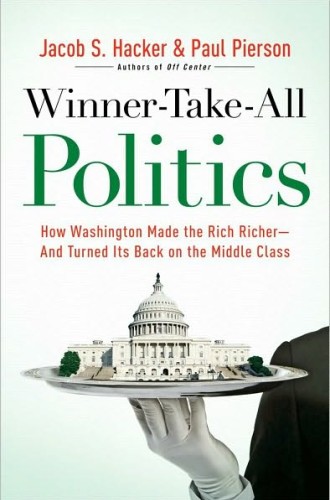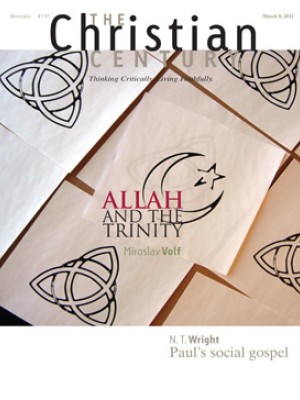How the rich got richer
Jacob Hacker and Paul Pierson tell a story that is at once familiar and unfamiliar. The familiar part is that over the past 30 years inequality in both wealth and income has grown dramatically in the United States.
Since the late 1970s the wealthiest 1 percent of the nation's population has pocketed more than 35 percent of the real national income growth, which is more than the bottom 90 percent of the population combined. Or looking at it from a different angle, between 1979 and 2006 the bottom 20 percent of the population had real income growth of 0.3 percent and the middle 20 percent had real income growth of 0.7 percent, while the top 1 percent enjoyed real income growth of an astonishing 260 percent.
We have moved from what Hacker and Pierson call the "Broadland" of the 30 years before 1979, when growth in wealth was broadly shared by all sectors of the population, to "Richistan," where the lion's share of wealth goes to the top 1 percent. And the tiny growth in the real income of the middle class has been the consequence of people working more: individuals are working more hours, and more family members are in the job market.
Read our latest issue or browse back issues.
The less familiar part of the narrative is about how this inequality came about. Hacker and Pierson trace the story of a "thirty-year war" that began, unexpectedly, in the Carter years. In the late 1970s capital gains taxes were slashed, payroll taxes raised and unions crippled. The authors argue that the enormous shift in wealth was not caused by the usual suspects—economic globalization or technological change that benefits the educated. Nor was it the consequence of the "unfettered market" taking its natural course. Rather, it was the result of government policy—that is, of politics that have tilted the playing field in favor of the wealthy and the superwealthy, the latter being the top tenth of the top 1 percent of the population.
Since the late 1970s business and corporate interests have fought successfully for lower tax rates, especially for the most affluent; deregulation of financial markets and executive pay; and erosion of the powers of countervailing groups—labor unions chief among them.
Though the campaign of organized business interests and their political allies began in the late 1970s, it reached its zenith in the "aughts," the period from 2001 to 2007, just before the Great Recession. The six years beginning in 2001 were years of consecutive economic growth in America. Yet during that period the median income of nonelderly households actually fell, and the percentage of people living in poverty rose. Still, as Hacker and Pierson note, "The news wasn't all bad. Between 2002 and 2007 the real pretax incomes of those in the top 1 percent rose by 10 percent. Per year."
The balance of their readable book tells the story of the 30-year war: the tremendous growth in conservative PACs, think tanks and advocacy groups; the huge sums of money raised to support the agenda of tax cuts; the growing radicalization of the Republican Party; and the role of the Democratic Party, which pretty much went with the cash flow, sometimes actively, sometimes passively.
In some ways neither the familiar story nor the unfamiliar story is the real story. The real story is the decline and growing jeopardy of the American middle class, which has gone from being the secure bulwark of American democracy and countless civic institutions to a social class where many are, as the saying goes, just two paychecks from homelessness.
Members of the middle class have stayed even economically amid the overall growth in the economy, but they've done so by working more or borrowing more—and often both. With the Great Recession—induced in large part by the failure to regulate banks and financial institutions, which allowed the wealthiest to become wealthier still—neither working more nor borrowing more remains an option. This decline of a stable and secure middle class, which once carried the freight for civil society, is the real story of the last 30 to 40 years in the U.S.
Does religion figure in the story? Hacker and Pierson's only explicit discussion of religion relates to the growing role of the Christian right, which moved evangelical Christian voters into political activism for the Republicans. This is a crucial bloc that has voted, at least sometimes, more on the basis of cultural values than economic self-interest.
The mirror image of that development is what Hacker and Pierson describe as the refocusing of liberalism away from the traditional bread-and-butter concerns of older groups such as organized labor and toward the social concerns of the more affluent—abortion rights, women's rights, environmentalism and civil liberties. Advocacy groups for all these issues proliferated in this 30-year period. "And yet, they almost never focused their attention on the economic issues that most powerfully affected the working and middle classes. The result was a boon for the post-materialist causes of more affluent liberals, but it left traditional material causes with only a handful of energetic backers." Among liberal Protestant denominations this pattern is evident.
The New Liberalism left the working class and much of the middle class without any political champion for their material concerns. The result is both the "tax revolts" of the 1980s and '90s and more recently the emergence of the Tea Party. The Republicans have managed to capture much of this vote, in large part by deploying the rhetoric of antigovernment populism while playing a very different game in the policy trenches. The Bush tax cuts of 2001 are a good example of that duplicity, with the bottom 80 percent of taxpayers receiving an average $600 reduction in taxes, while the top 1 percent received $38,500.
But if the Republicans have been the spear carriers, the Democrats haven't been far behind. The ball got rolling during the Carter years, and it was Bill Clinton who signed legislation exempting financial institutions from regulation of derivatives and other exotic financial instruments. Once the New Liberalism had abandoned material concerns for postmaterial ones, not only was no one championing working- and middle-class voters' mounting economic concerns, these issues were hardly even noticed.
The theological issues implicit throughout the book are captured nicely by Phil Gramm, the Texas senator who had as much to do with deregulation as anyone. "When I am on Wall Street," said Gramm, "to me that's a holy place." "The Market" has become a deity to be unquestioningly obeyed, even worshiped. But like all idols, the mythic Market is a human fabrication—which is Isaiah's classic understanding of the nature of idols. The Market is neither omniscient nor preexistent. It has been created and shaped by politics and by government action and inaction.
The decline of the U.S. middle class has a great deal to do with the multiple signs of a culture in disarray, from high divorce rates to rampant addiction, from Americans working so many more hours to the erosion of civic institutions. It has had an impact on the churches too. Churches that play a broad public role have struggled, while those that emphasize a more private salvation and a gospel of prosperity—which fit these times and their growing desperation—have grown.
Hacker and Pierson focus most on the familiar story of the widening wealth gap and the unfamiliar one of the role politics has played in creating it. The larger story, of the jeopardy of the middle class and its consequences for the nation, remains to be told.






